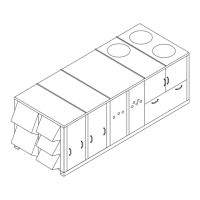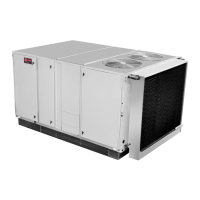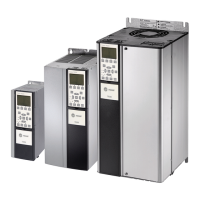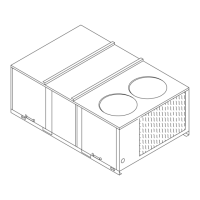RT-SVX34C-EN 109
Startup
If present during a compressor start, liquid refrigerant could damage compressor bearings due to
reduced lubrication and eventually could cause compressor mechanical failures.
Prior to the initial start or when power to the unit has been "Off" for an extended period, allow the
crankcase heater to operate a minimum of 8 hours before starting the unit.
Charging by Subcooling
The unit is shipped with a complete refrigerant charge. However, if it becomes necessary to add
refrigerant, it should be done so by adding charge to obtain an acceptable subcooling as described
below. Refer to the maintenance section for proper refrigerant charging practices.
The outdoor ambient temperature must be between 65° and 105° F and the relative humidity of the
air entering the evaporator must be above 40 percent. When the temperatures are outside of these
ranges, measuring the operating pressures can be meaningless.
With the unit operating at "Full Circuit Capacity", acceptable subcooling ranges between 14° F to
22° F.
Measuring Subcooling
WARNING
R-410A Refrigerant under Higher Pressure than R-22!
The unit described in this manual uses R-410A refrigerant which operates at higher pressures
than R-22 refrigerant. Use ONLY R-410A rated service equipment or components with this unit.
For specific handling concerns with R-410A, please contact your local Trane representative.
Failure to use R-410A rated service equipment or components could result in equipment or
components exploding under R-410A high pressures which could result in death, serious injury,
or equipment damage.
1. At the liquid line service valve, measure the liquid line pressure. Using a Refrigerant R-410A
pressure/temperature chart, convert the pressure reading into the corresponding saturated
temperature.
2. Measure the actual liquid line temperature as close to the liquid line service valve as possible.
To ensure an accurate reading, clean the line thoroughly where the temperature sensor will be
attached. After securing the sensor to the line, insulate the sensor and line to isolate it from the
ambient air.
Note: Glass thermometers do not have sufficient contact area to give an accurate reading.
3. Determine the system subcooling by subtracting the actual liquid line temperature (measured
in step 2) from the saturated liquid temperature (converted in step 1).
Gas Heat Units
Open the main disconnect switch to shut the unit off and to reset the RTRM.
Follow the Test Guide in Table 28, p. 74 or Table 29, p. 74 to start the unit in the heating mode.
Jumping the "Test" terminals several times for two to three seconds will be required.
When starting the unit for the first time or servicing the heaters, it is a good practice to start the
heater with the main gas supply turned "Off".
All heating units have either two stage or modulating heat capabilities. The "High" heat models
contain two heat exchangers. In staged units, the heat exchangers operate simultaneously at either
the low or high fire state. In modulating units, the modulating furnace fires first and adjusts to the
needed capacity. If more heat is required than the modulating can provide, the second bank is fired
at full fire and the modulating bank again adjusts to the heating load present.
Check both ignition systems (if applicable) when going through the test procedures.
Once the ignition system and ignitors have been checked, open the main power disconnect switch
to reset the RTRM.

